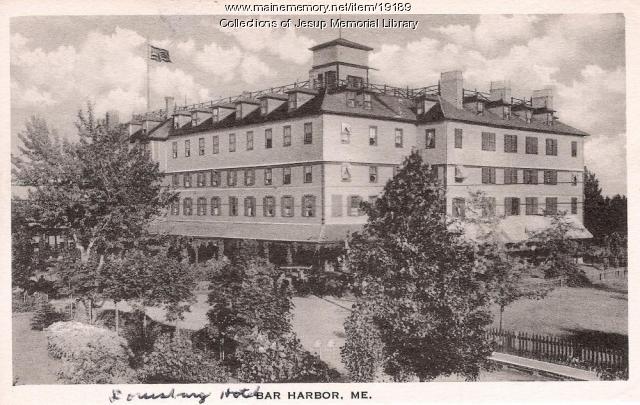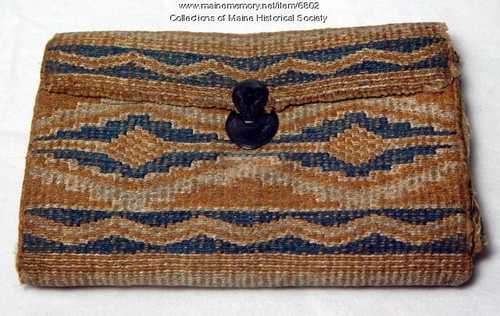Keywords: Birchbark
Item 23489
Contributed by: Hudson Museum, Univ. of Maine Date: 1900 Media: Birchbark
Item 23495
Birchbark wastebasket, ca. 1900
Contributed by: Hudson Museum, Univ. of Maine Date: circa 1900 Media: Birchbark
Exhibit
Gifts From Gluskabe: Maine Indian Artforms
According to legend, the Great Spirit created Gluskabe, who shaped the world of the Native People of Maine, and taught them how to use and respect the land and the resources around them. This exhibit celebrates the gifts of Gluskabe with Maine Indian art works from the early nineteenth to mid twentieth centuries.
Exhibit
Creation and other cultural tales are important to framing a culture's beliefs and values -- and passing those on. The Wabanaki -- Maliseet, Micmac, Passamaquoddy and Penobscot -- Indians of Maine and Nova Scotia tell stories of a cultural hero/creator, a giant who lived among them and who promised to return.
Site Page
View collections, facts, and contact information for this Contributing Partner.
Site Page
Mount Desert Island: Shaped by Nature - Inns
"And he was a birchbark craftsman. He used to do a big business with birchbark frames. He didn’t have to go to Bar Harbor to sell them because people…"
Story
Mali Agat (Molly Ockett) the famous Wabanaki "Doctress"
by Maine Historical Society
Pigwacket Molly Ockett, healing, and cultural ecological knowledge
Lesson Plan
Wabanaki Studies: Stewarding Natural Resources
Grade Level: 3-5
Content Area: Science & Engineering, Social Studies
This lesson plan will introduce elementary-grade students to the concepts and importance of Traditional Ecological Knowledge (TEK) and Indigenous Knowledge (IK), taught and understood through oral history to generations of Wabanaki people. Students will engage in discussions about how humans can be stewards of the local ecosystem, and how non-Native Maine citizens can listen to, learn from, and amplify the voices of Wabanaki neighbors to assist in the future of a sustainable environment. Students will learn about Wabanaki artists, teachers, and leaders from the past and present to help contextualize the concepts and ideas in this lesson, and learn about how Wabanaki youth are carrying tradition forward into the future.












